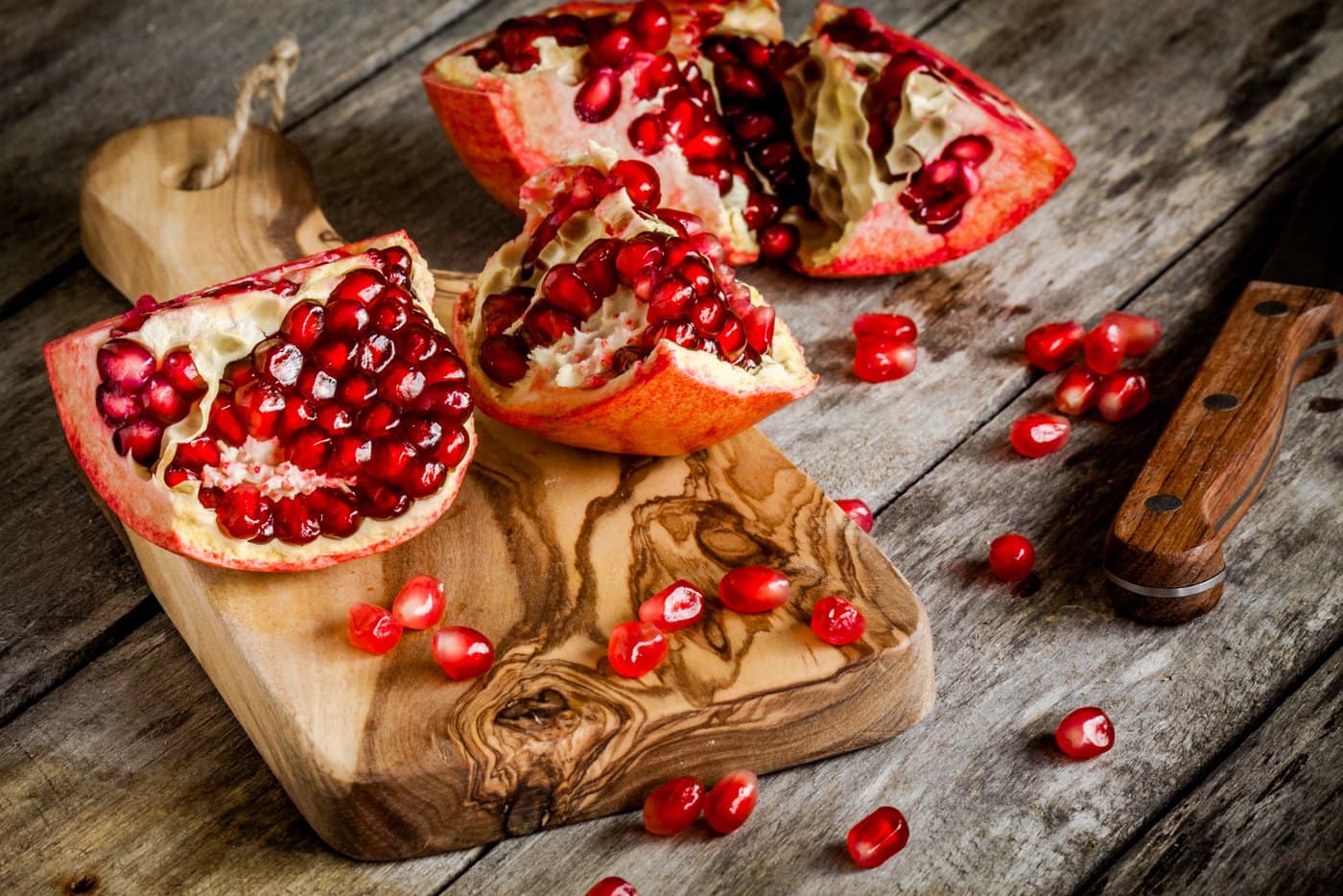How do you eat a pomegranate?
Pomegranates have long been a popular fruit, but they’re experiencing a renewed surge in popularity due to their potential health benefits.
The edible portion of the pomegranate includes the seed and the juicy translucent flesh covering the seed. The tart flavor of the pulp and the bright red juice can add interest and variety to other foods.
The flesh-covered seeds can be used as a garnish in fruit cups, compotes, salads, desserts and as a snack — while the juice is used to make jellies, puddings, desserts, and drinks.
The history of the funny red fruit
The pomegranate originated somewhere between Iran and the Himalayas of northern India. It has been grown and cultivated across Mediterranean Europe, Asia, and Africa since ancient times. Ancient Egyptian art and mythology featured the pomegranate. The fruit is found to be mentioned in the Old Testament of the Bible and the Babylonian Talmud.
The pomegranate was carried across deserts by caravans because of its thirst-quenching juice. It has also been widely cultivated throughout India, China, Egypt and the Middle East.
How to eat a pomegranate
- Cut off the crown end of the pomegranate.
- Lightly score the rind in several places.
- Hold fruit under a bowl of water and break sections apart.
- Separate seeds from membrane. (Seeds will sink.)
- Remove rind and pith from water and discard.
- Pour seeds into a colander, drain, and pat dry.
Pomegranate was commonly planted in the Caribbean during the exploration of the New World. The tree became naturalized in Bermuda and has been recorded growing there since 1621. It is also frequently grown in Mexico.
The fruit was introduced to the United States in the late 1700s by Spaniards who planted the trees at their missions. The pomegranates that were planted in California and Arizona are still found growing in those states today.
Pomegranate basics
Pomegranates are rich in phytochemicals and may reduce one’s risk of heart disease and cancer. They also are nutritionally smart, as they’re a good source of potassium, and contain vitamin C and fiber. One medium apple-sized pomegranate provides about 105 calories and has 26 grams of carbohydrates.
When ripe, the outer skin of the pomegranate becomes soft and can be scratched under gentle pressure. The shape changes with the sides becoming slightly squared; it will look flattened on the sides. As the seeds (also known as arils) reach their maximum juice content, they press against the outer wall and cause the sides to flatten.
Pomegranate color ripens to a deep red shade on the outside. Before ripening, the skin is hard, tight and cannot be easily scratched. Unripe pomegranate fruit is round in shape much like an apple.
It’s a good idea to wear an apron when handling pomegranates as they tend to spurt, and the deep red stain is difficult to remove. Because pomegranate juice can darken if it comes in contact with metal, use plastic or glass utensils.
Pomegranate fast facts
- The pomegranate tree only bears fruit in a hot, dry climate.
- Each pomegranate contains hundreds of edible seeds.
- A mature pomegranate is about the size of a large orange.
- Pomegranates can be stored for two months in the fridge.
- Pomegranates grown in the US are available from September-December.
- Ripe fruit will make a metallic sound when tapped.
6) When you need a large number of seeds, cut off the crown and score the pomegranate lengthwise in three or four places. Seeds can also be removed by cutting the pomegranate in half, placing the cut face down, and rapping the shell firmly with a blunt instrument such as a hammer handle.
7) Pomegranate keeping quality is similar to that of apples. They should be kept in a cool, dry, well-ventilated place, out of direct sunlight. Whole fruit can be refrigerated and will keep as long as 2 months. Fresh seeds or juice will keep in the refrigerator for up to 5 days.
8) Pomegranate arils can be frozen for later use. To freeze, spread the arils, single layer, on a baking sheet lined with wax paper. Put them in the freezer for no more than 2 hours, then transfer to a moisture, vapor-proof freezer bag or container for storage. Return to the freezer and use within one year.
Pomegranate fruit salad recipe
Combine 4 cups pomegranate seeds, 2 diced apples, 2 diced bananas and 1/2 cup chopped walnuts. For dressing, try one of the following: whipped cream or low fat vanilla yogurt; or 2 parts orange or apricot juice with one part balsamic vinegar. Mix fruit, add dressing and stir.
Information provided by the US Department of Agriculture as well as Karen Thomas, a family and consumer sciences educator for Penn State Extension in Lackawanna County.







